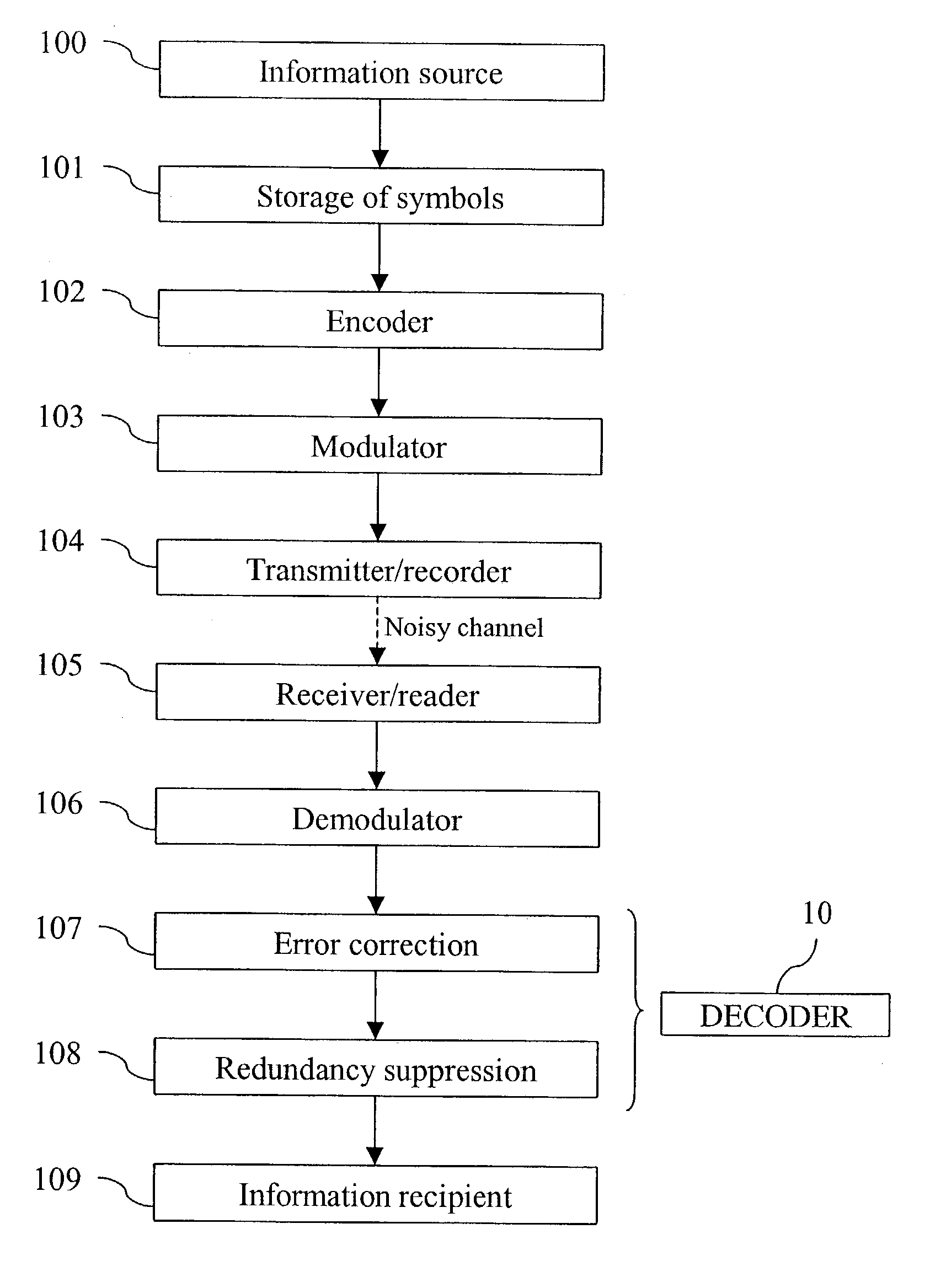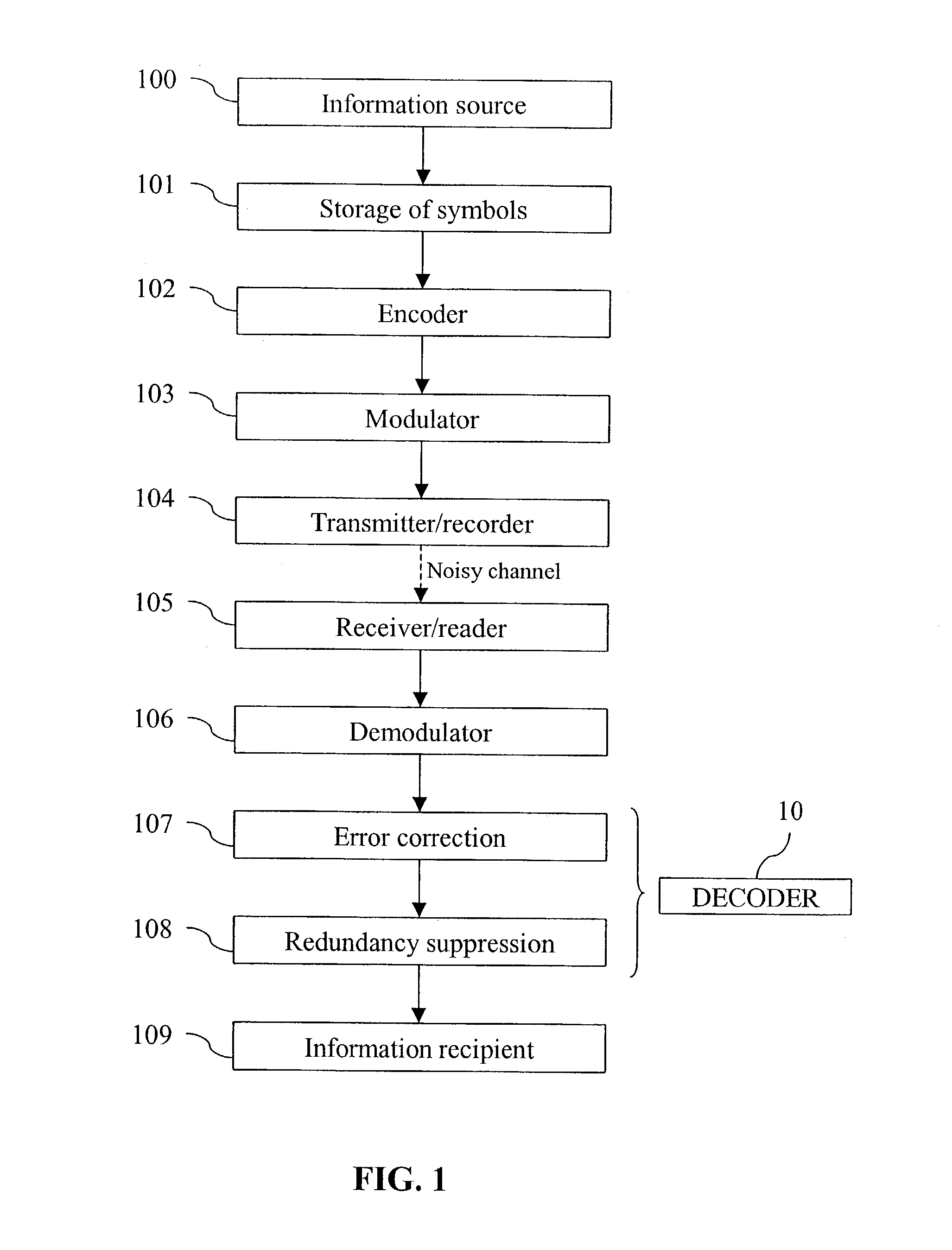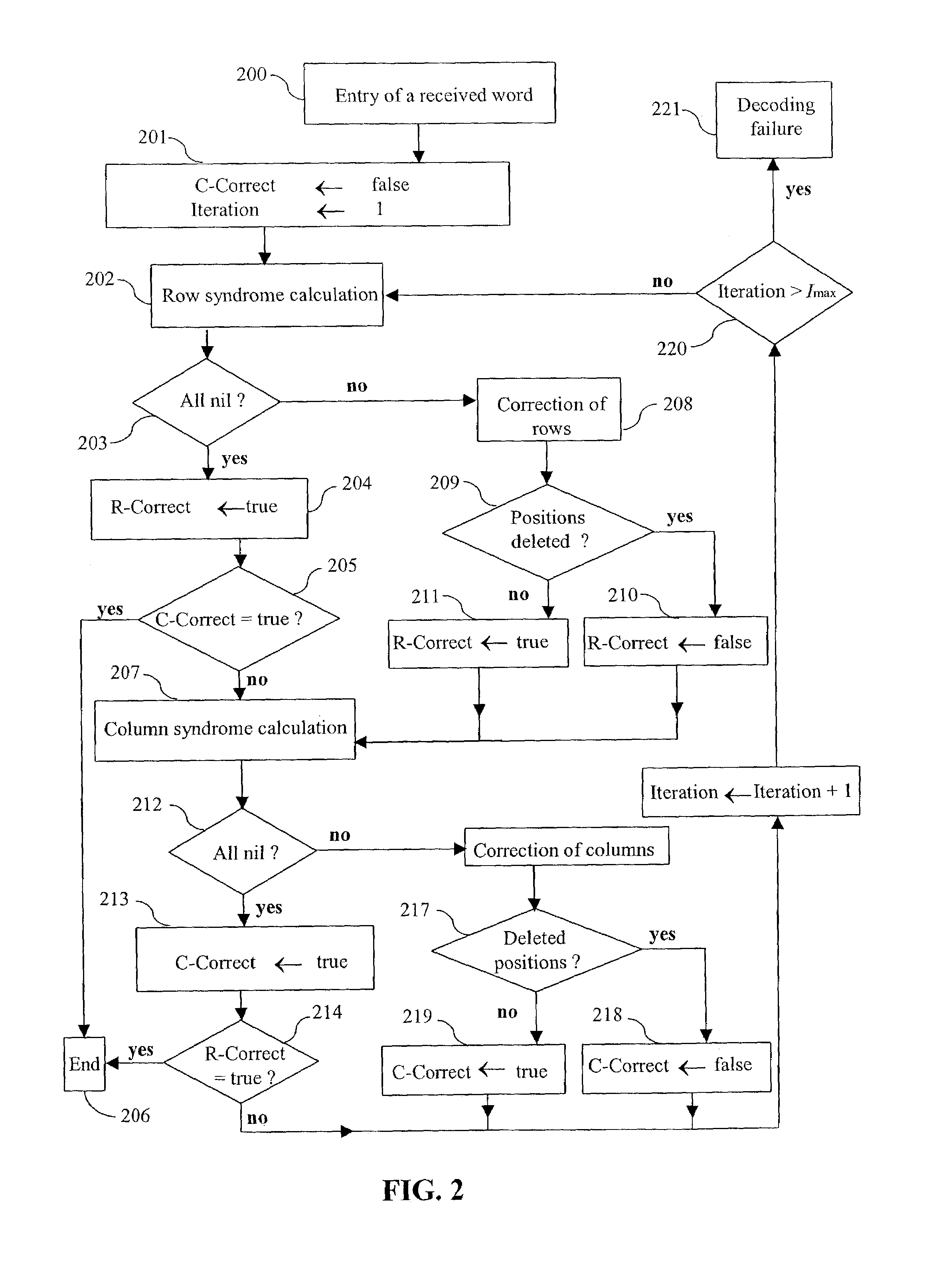Low-cost methods and devices for the decoding of product cases
a low-cost, product-case technology, applied in the field of communication systems, can solve the problems of reducing the information density of the word, reducing the accuracy of the word, so as to achieve the effect of increasing the information density
- Summary
- Abstract
- Description
- Claims
- Application Information
AI Technical Summary
Benefits of technology
Problems solved by technology
Method used
Image
Examples
Embodiment Construction
[0072]FIG. 1 is a block diagram of a system for transmitting information using a channel encoding according to the invention.
[0073]The function of this system is to transmit information of any nature from a source 100 to a recipient or user 109. First of all, the source 100 puts this information into the form of symbols belonging to a certain alphabet (for example quadruplets of bits), and transmits these symbols to a storage unit 101, which accumulates the symbols so as to form sets each containing k1·k2 symbols. Next, each of these sets is transmitted by the storage unit 101 to an encoder 102 which adds (n1·n2−k1·k2) redundant symbols to them, so as to build a word of product code in which each row is a word of length n1 belonging to a first component code, and each column is a word of length n2 belonging to a second component code (possibly identical to the first component code).
[0074]The words of product code so formed are next transmitted to a modulator 103, which associates a ...
PUM
| Property | Measurement | Unit |
|---|---|---|
| length | aaaaa | aaaaa |
| size | aaaaa | aaaaa |
| transmission | aaaaa | aaaaa |
Abstract
Description
Claims
Application Information
 Login to View More
Login to View More - R&D
- Intellectual Property
- Life Sciences
- Materials
- Tech Scout
- Unparalleled Data Quality
- Higher Quality Content
- 60% Fewer Hallucinations
Browse by: Latest US Patents, China's latest patents, Technical Efficacy Thesaurus, Application Domain, Technology Topic, Popular Technical Reports.
© 2025 PatSnap. All rights reserved.Legal|Privacy policy|Modern Slavery Act Transparency Statement|Sitemap|About US| Contact US: help@patsnap.com



